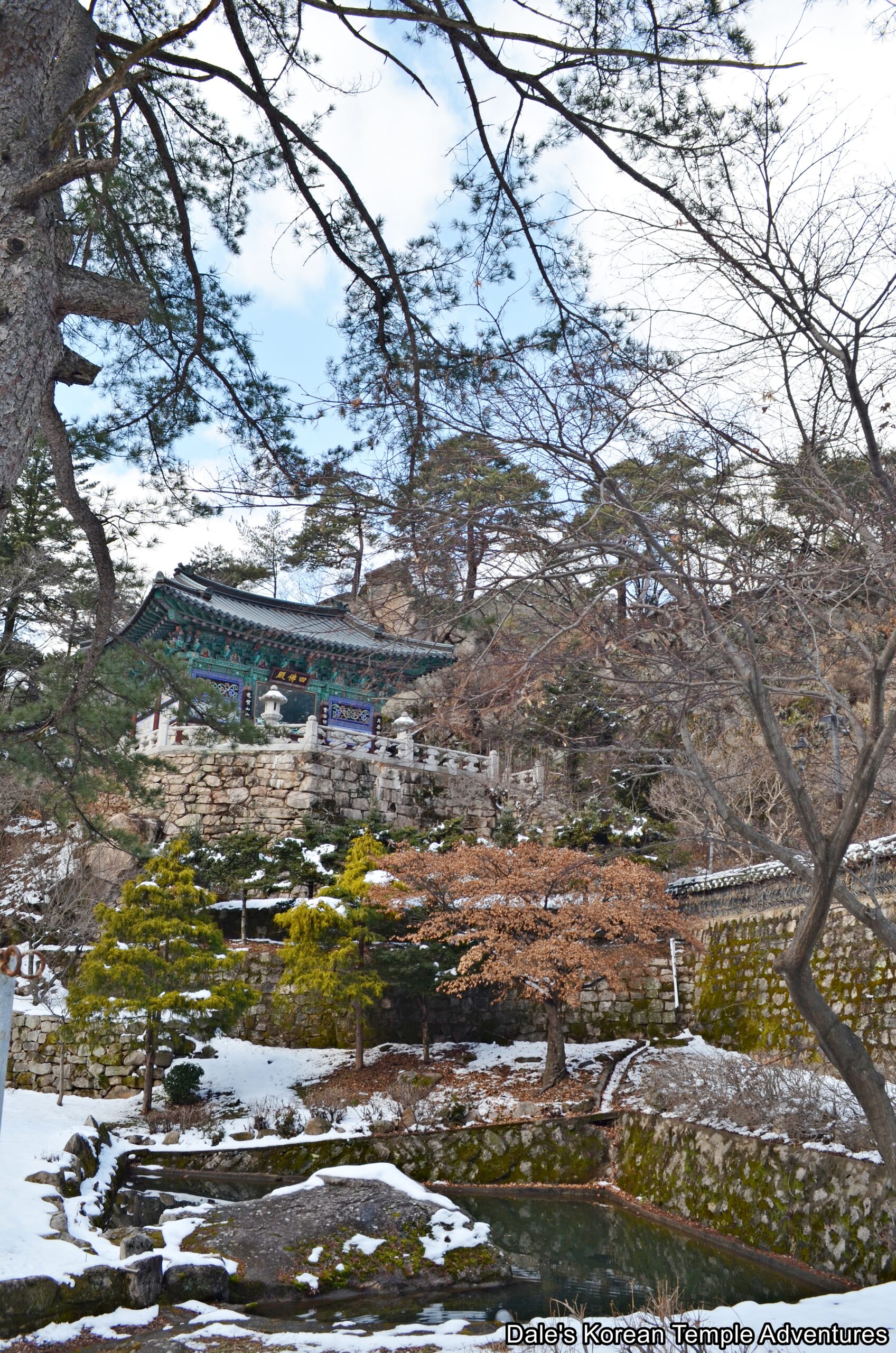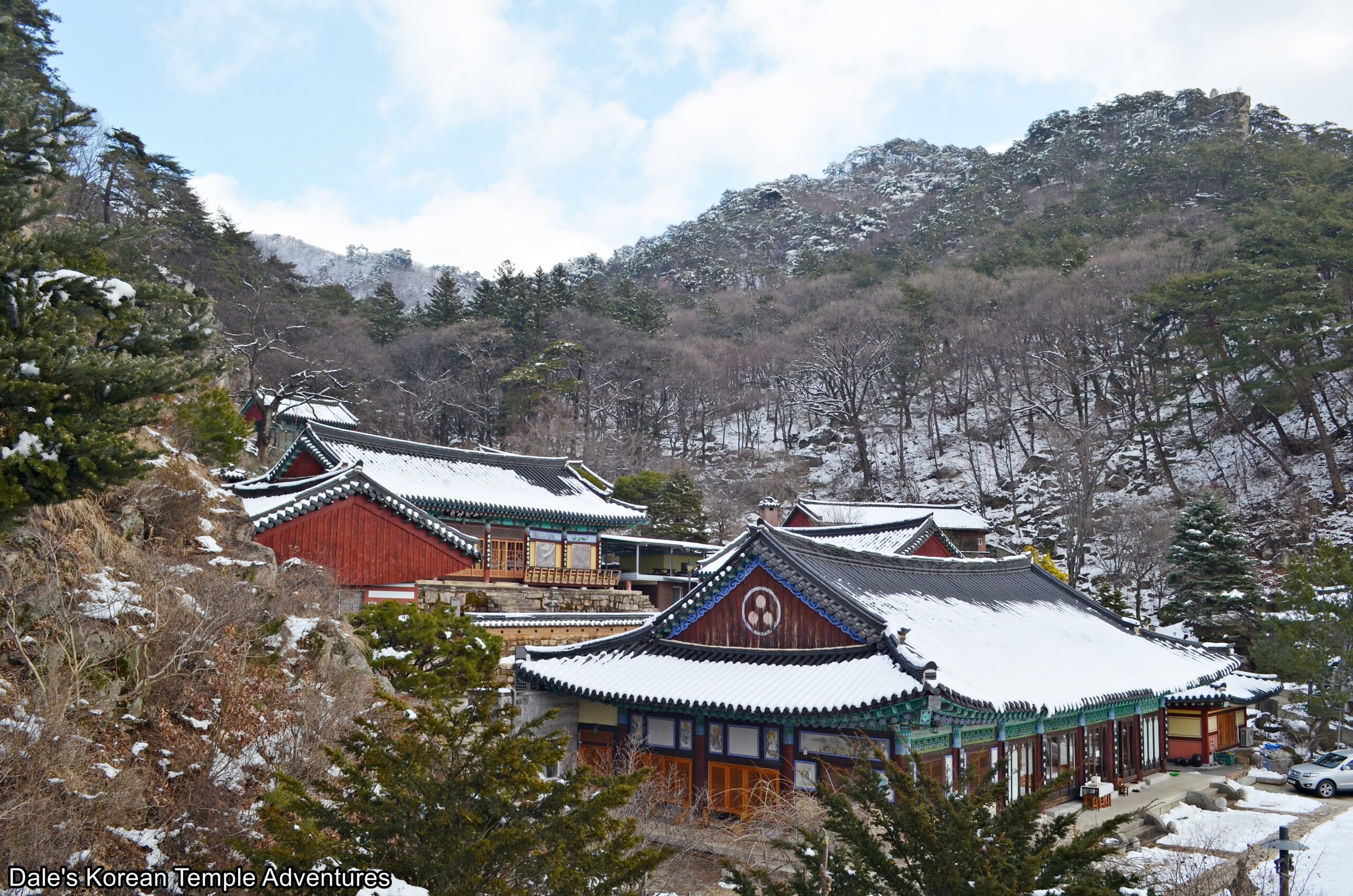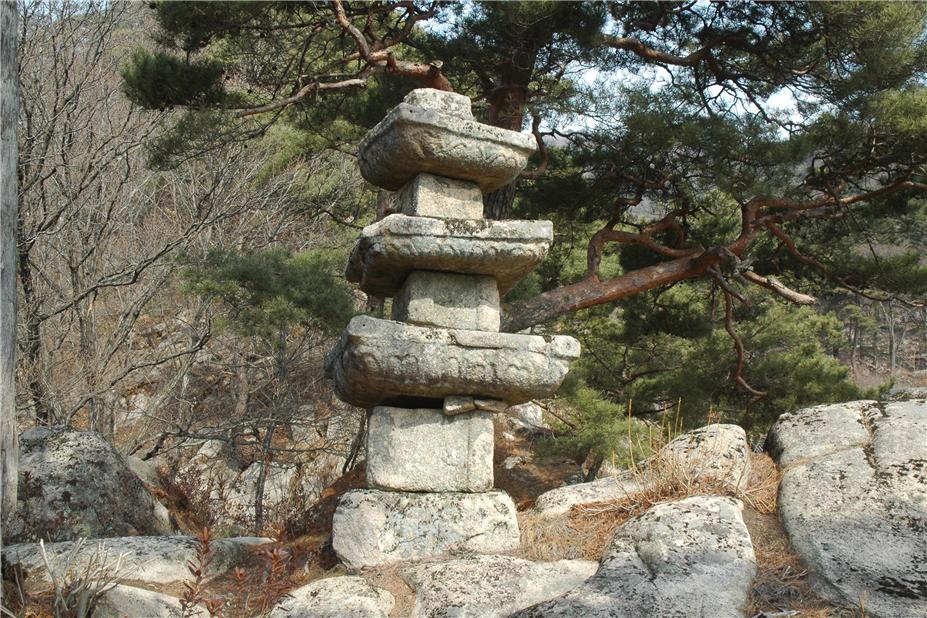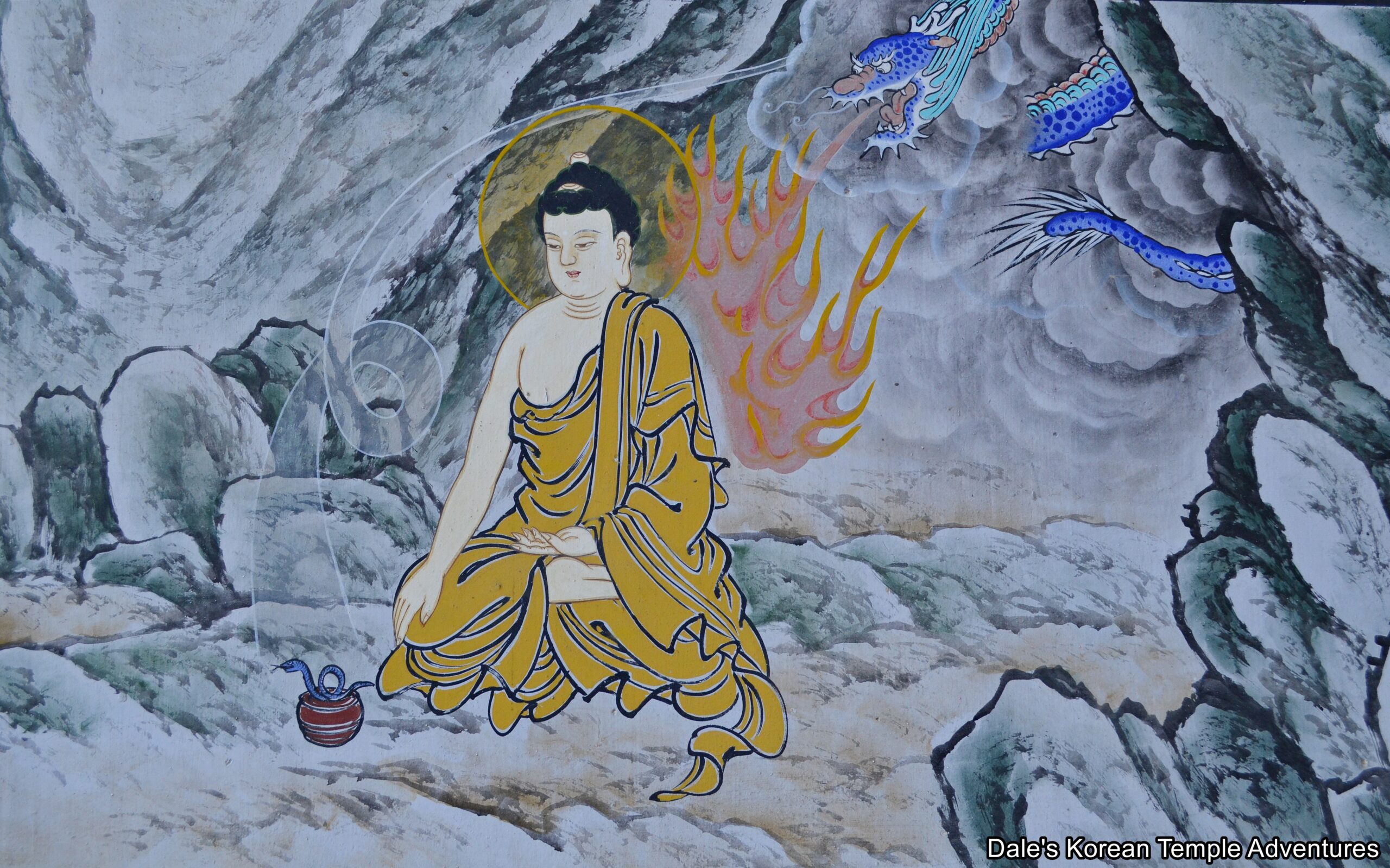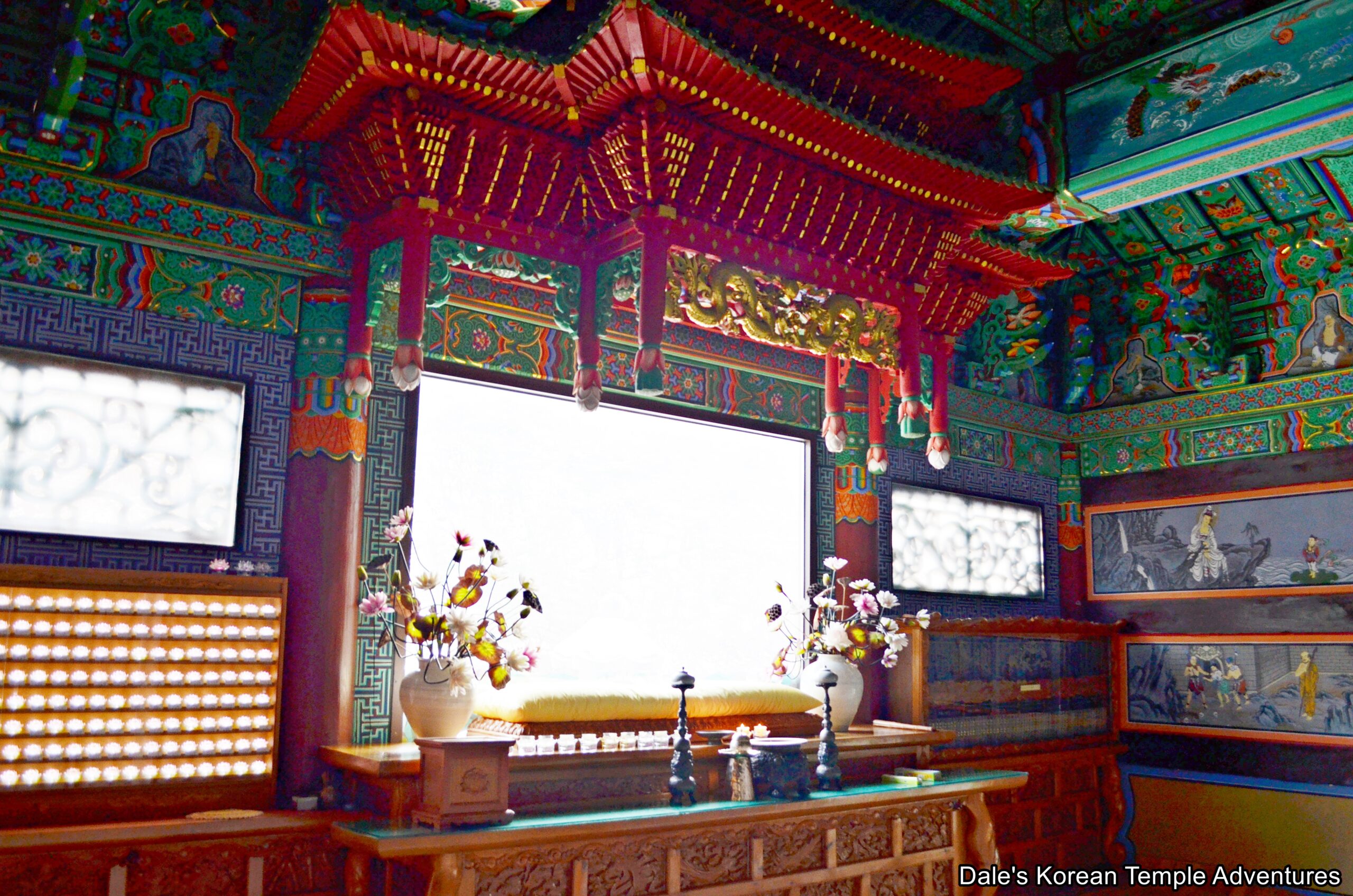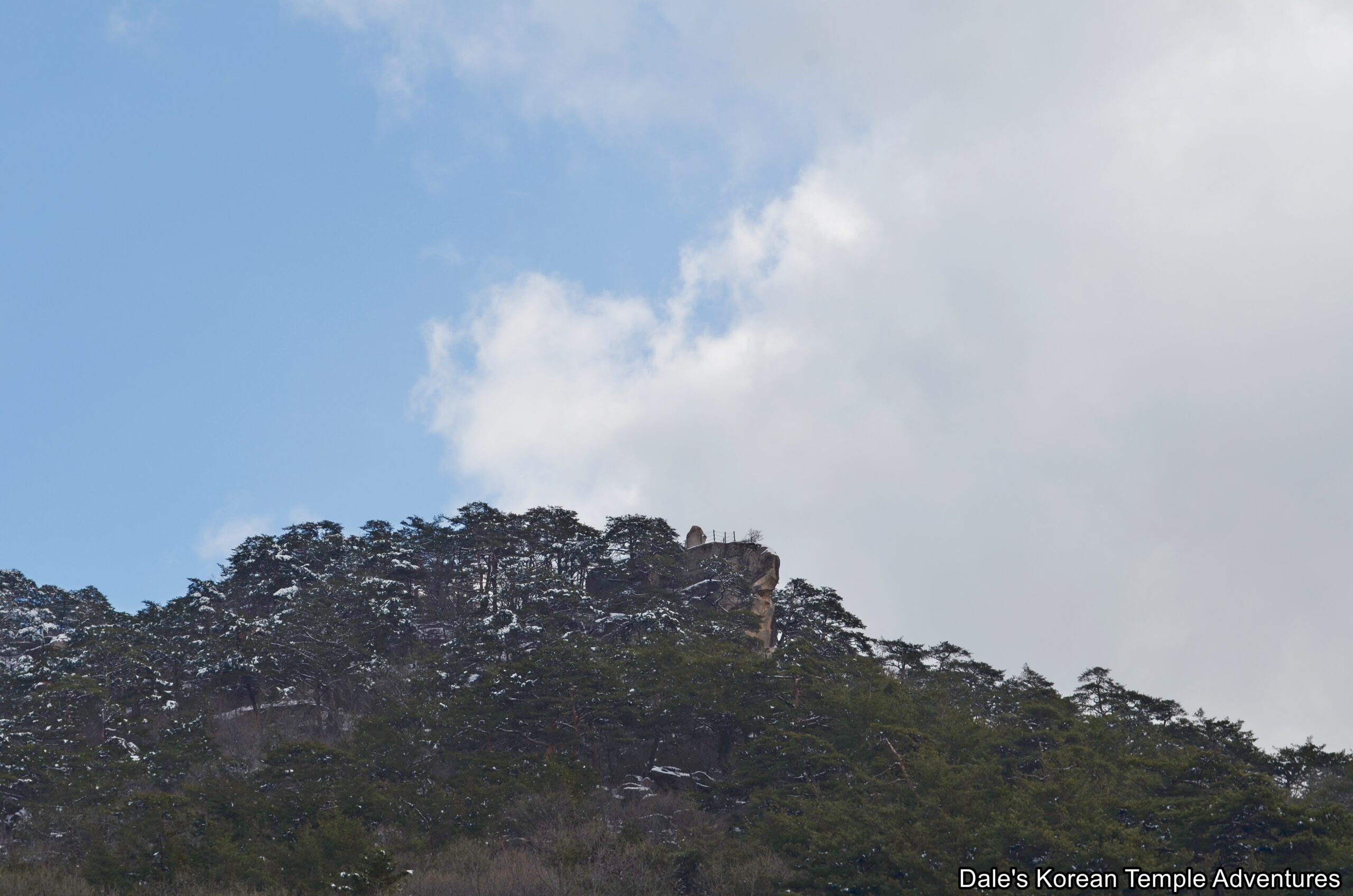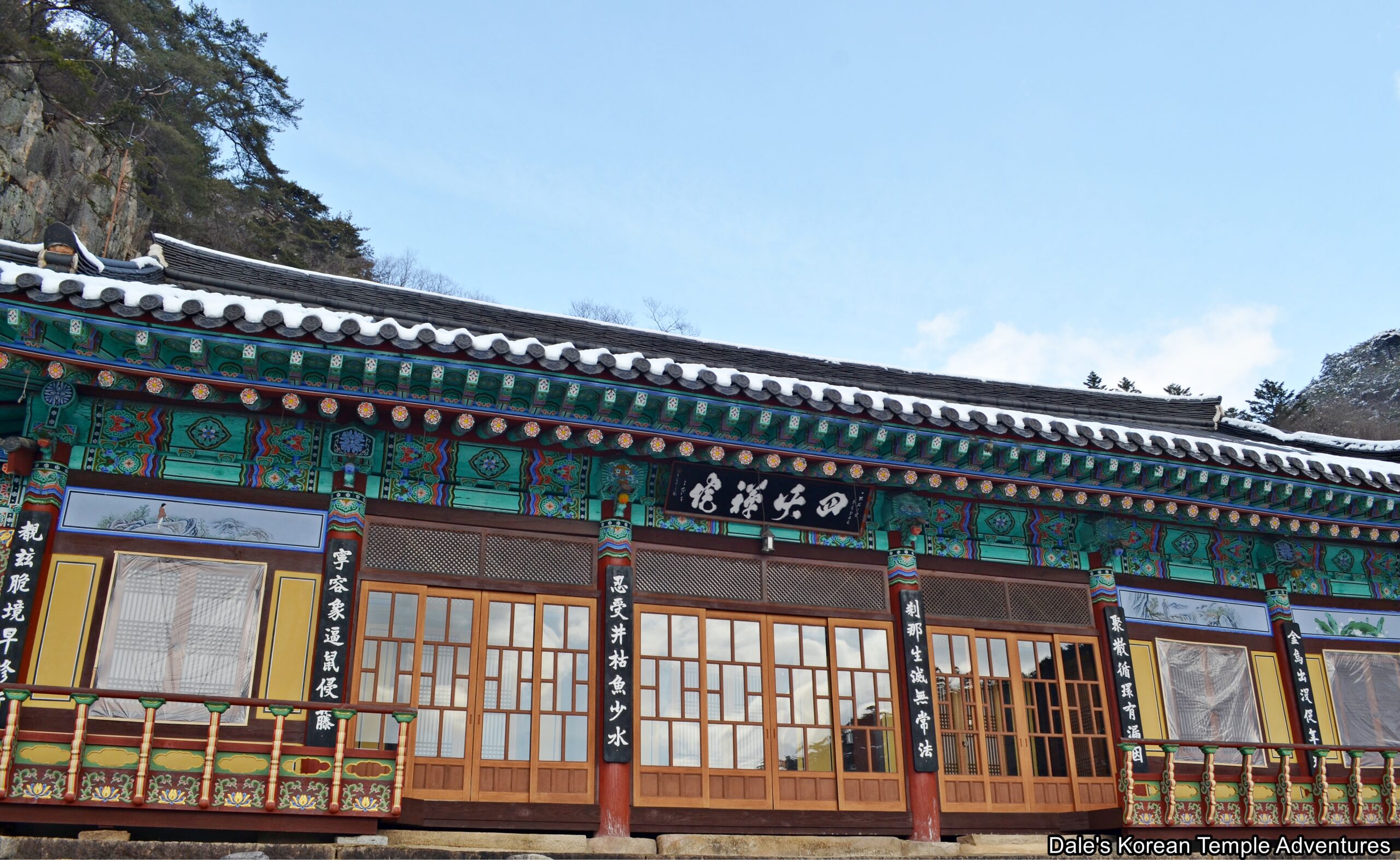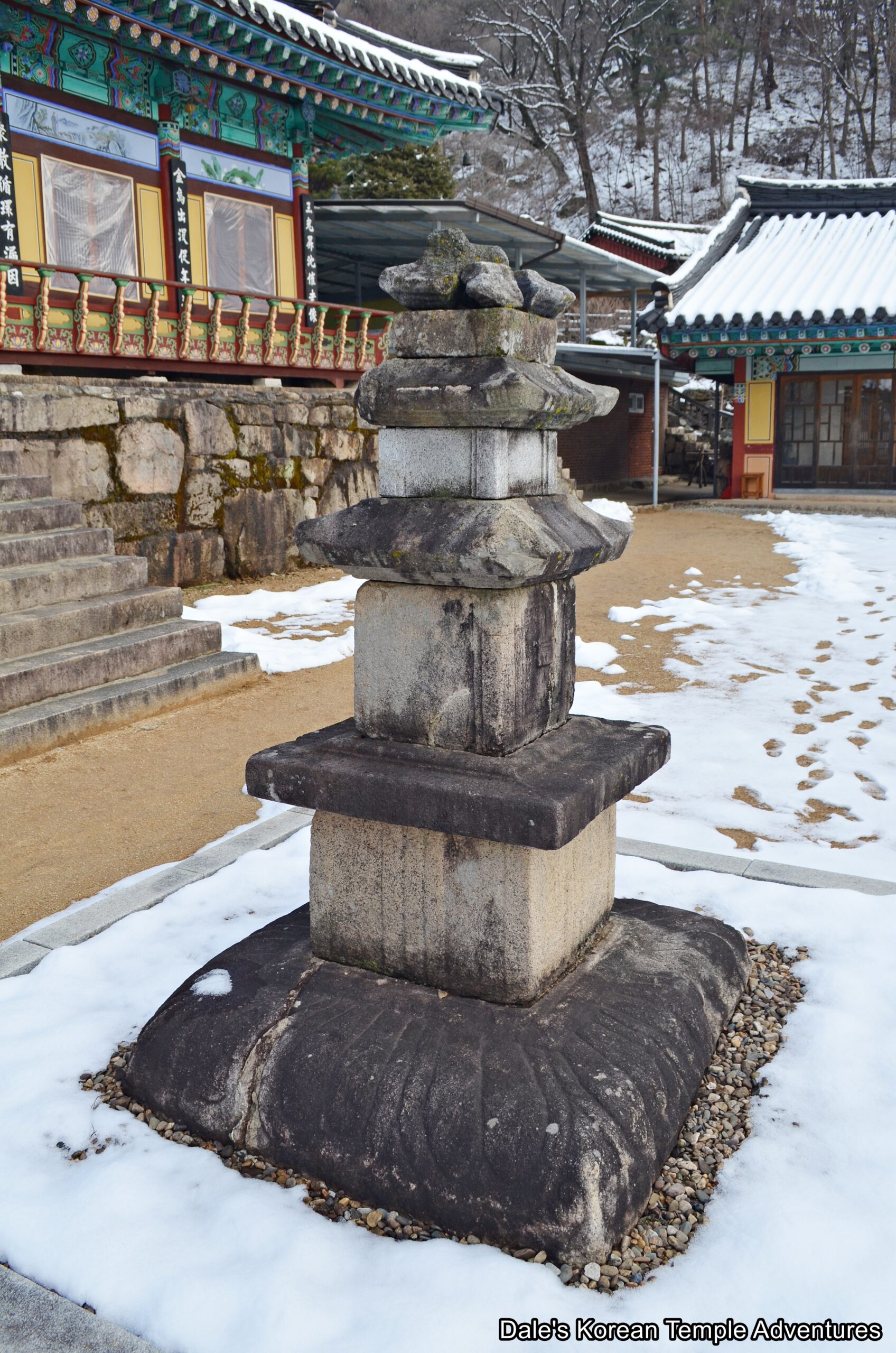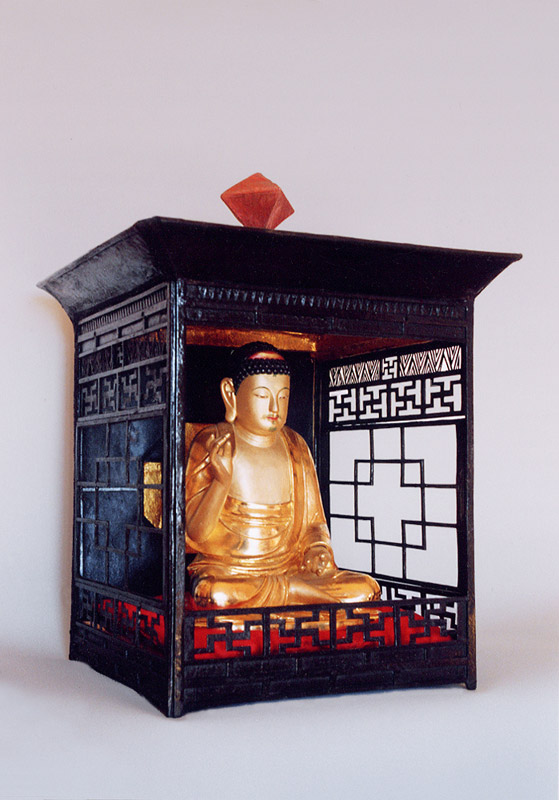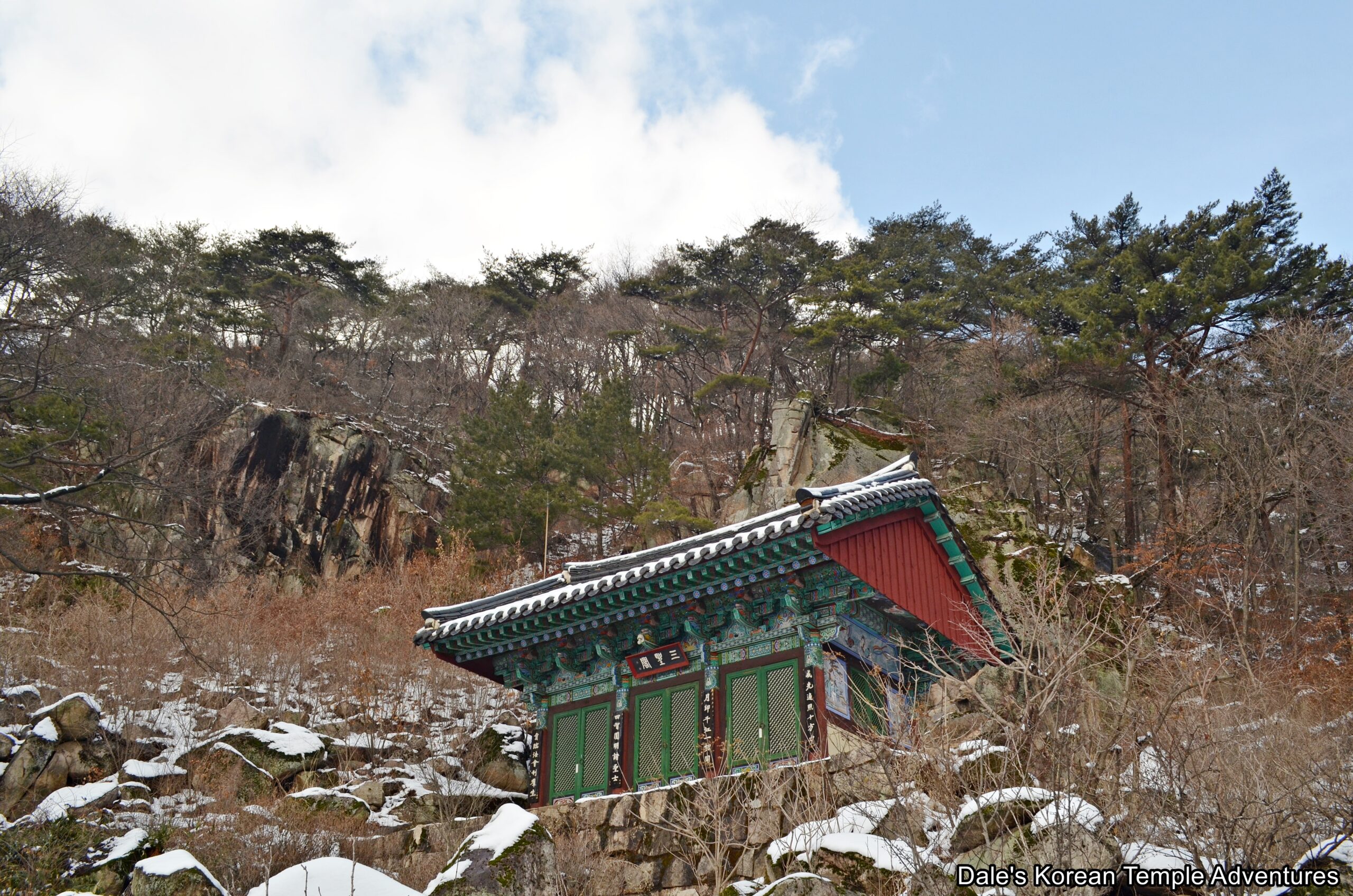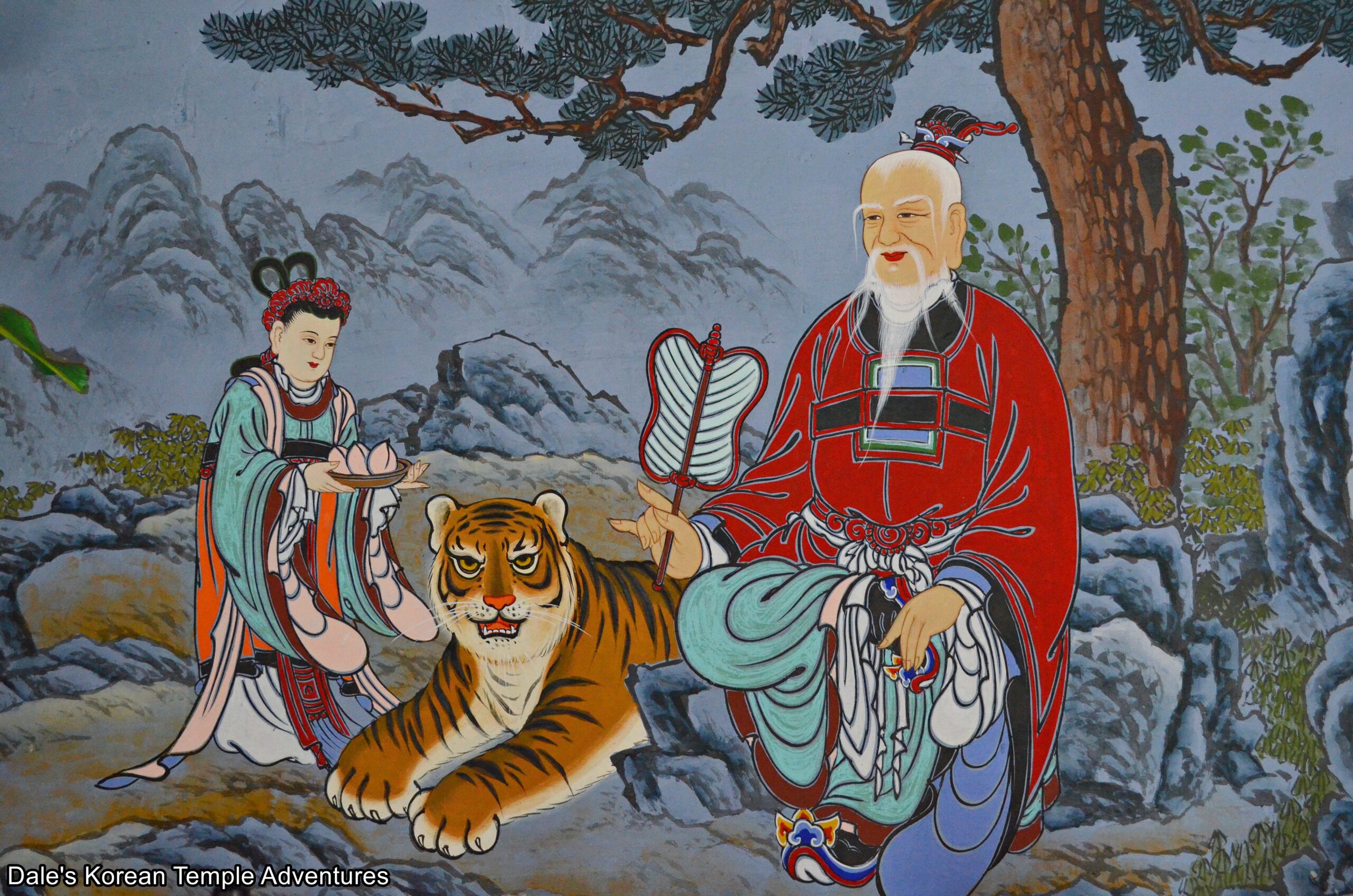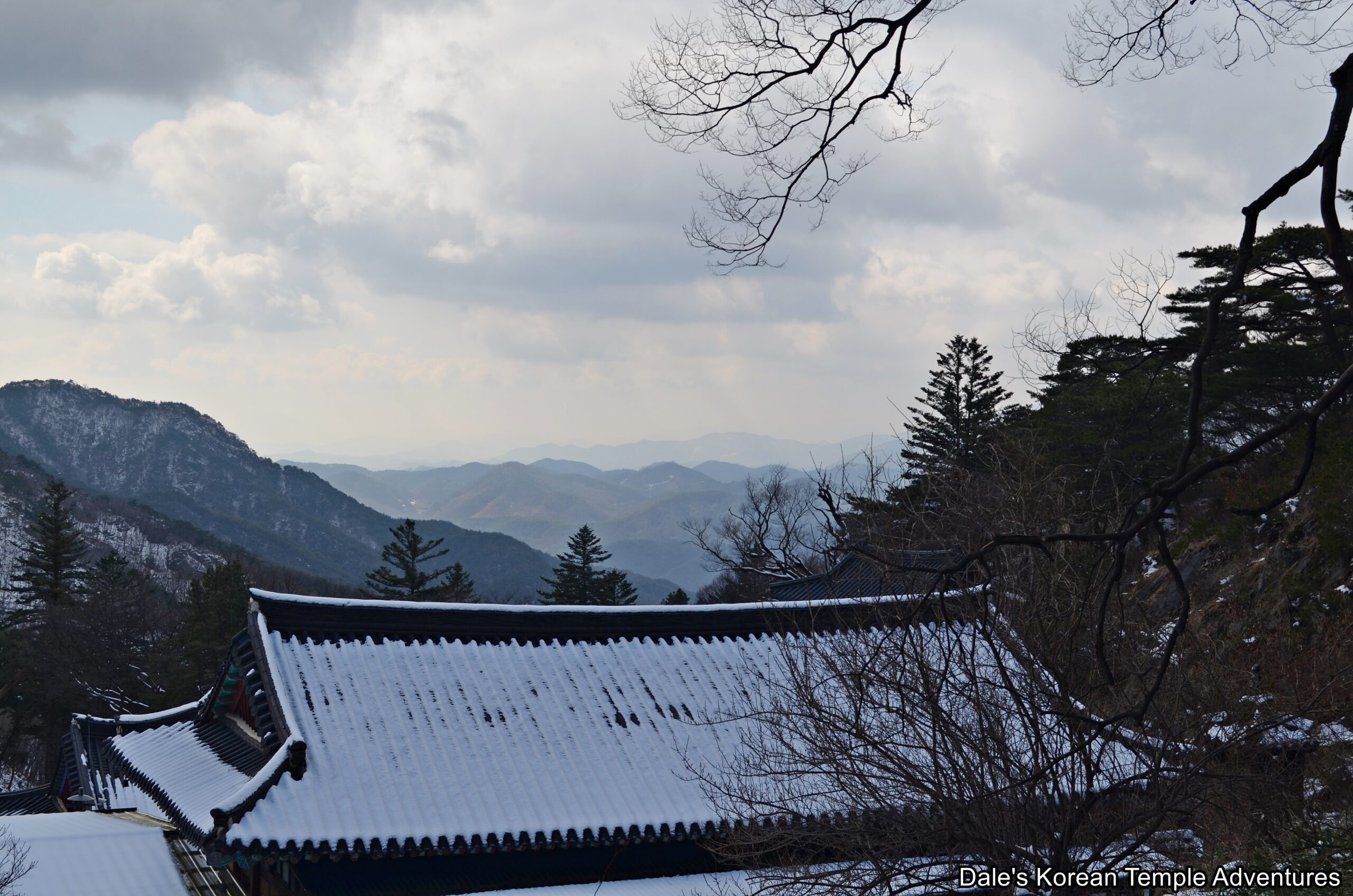Yunpilam Hermitage – 윤필암 (Mungyeong, Gyeongsangbuk-do)
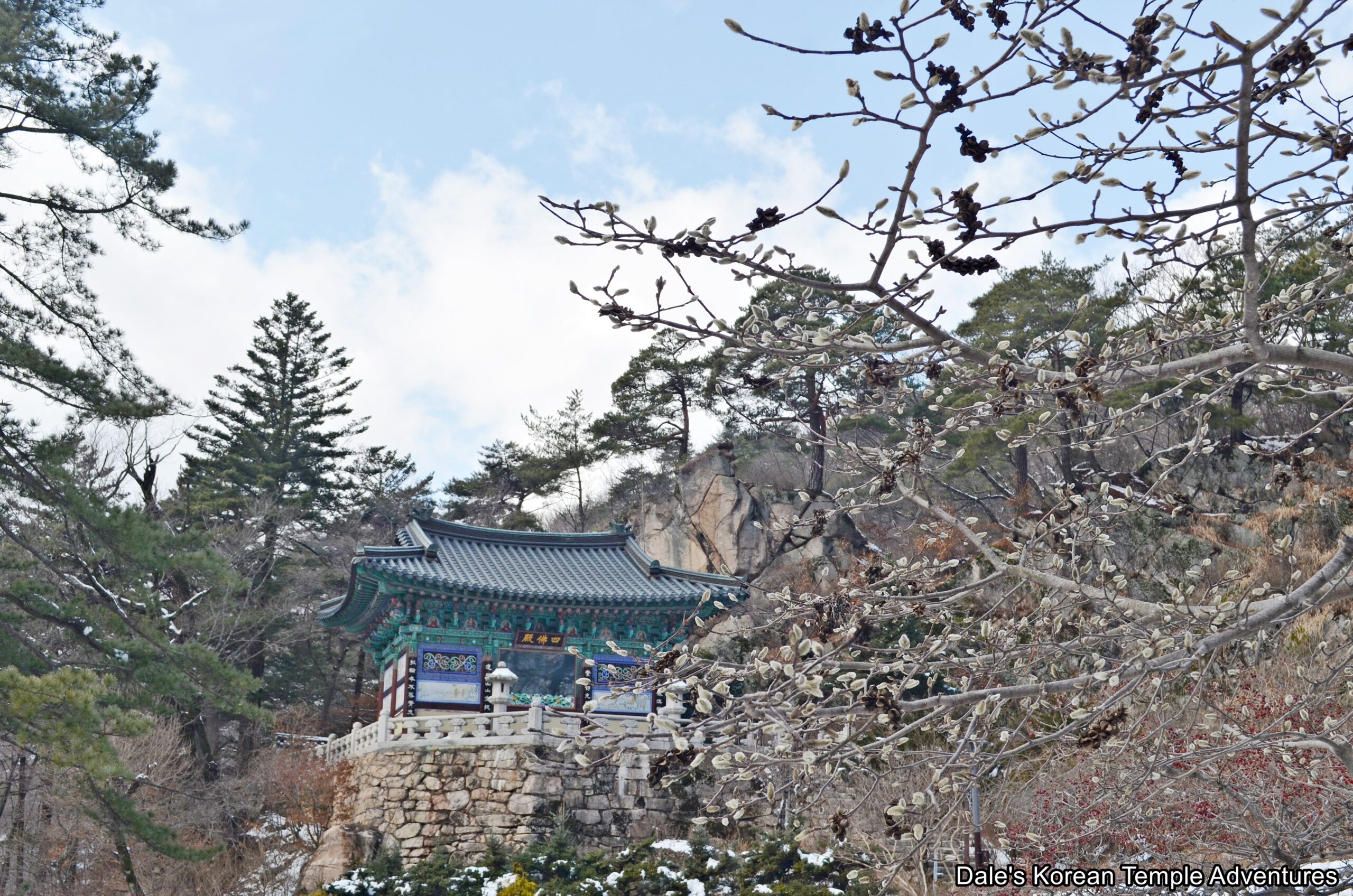
Hermitage History
Yunpilam Hermitage is located on the Daeseungsa Temple grounds in Mungyeong, Gyeongsangbuk-do. The hermitage is located to the west of Daeseungsa Temple and Mt. Gongdeoksan (914.5 m). According to the “History of Daeseungsa Temple,” Yunpilam Hermitage was first founded in 1380 by the monk Gakgwan. However, the “Record of Yunpilam Hermitage” states that the temple was founded by the monk Gakgwan and Lady Kim, who was the wife of the civil official Kim Deuk-bae. The hermitage was later rebuilt by the monks Seojo and Takjam in 1645. In 1862, there was a fire at the hermitage that completely destroyed all the buildings at Yunpilam Hermitage. In 1885, and by order of King Gojong of Korea (r. 1864-1897, 1897-1907, 1907-1910), the hermitage was rebuilt, once more, this time by the monks of Daeseungsa Temple.
By 1900, a mediation centre was established at Yunpilam Hermitage by Gyeongheo-seonsa (1846-1912), after he visited Daeseungsa Temple. Later, the hermitage was formally designated as a meditation centre in 1915. After this, even more monks came to practice at Yunpilam Hermitage. In 1931, Yunpilam Hermitage was turned into a meditation centre for nuns. And from 1984, the hermitage grounds have undergone extensive renovations.
As for the name of Yunpilam Hermitage, there are a couple competing legends behind the meaning of the hermitage’s name. One legend states that when Wonhyo-daesa (617-686 A.D.) and Uisang-daesa (625-702 A.D.) were performing a ritual for the dead at a temple on Mt. Sabulsan, Uisang-daesa’s half-brother, Yunpil, stayed here. And the other legend is connected to the monk Naong (1320-1376). When an image of Naong entered the area, the monk Gakgwan and Lady Kim decided to build the hermitage to enshrine the sari (crystallized remains) of Naong. Lee Saek was asked to write about this. However, Lee Saek didn’t receive a fee for his writing. The word “Yunpil” refers to a writing fee. As a result, this is where Yunpilam Hermitage gets its name. Whatever may or may not be correct, both legends are quite interesting.
While Yunpilam Hermitage isn’t home to any National Treasures or Korean Treasures, it is home to a few provincial treasures. These include the “Four-Sided Stone Buddha,” which is Gyeongsangbuk-do Tangible Cultural Property #403; the “Seated Wooden Amita-bul and Paper Tabernacle,” which is Gyeongsangbuk-do Tangible Cultural Property #300; the “Three-Story Stone Pagoda at Yunpilam Hermitage,” which is Gyeongsangbuk-do Tangible Cultural Property #596; and the “Atypical Three-Story Stone Pagoda of Yunpilam Hermitage,” which is Gyeongsangbuk-do Tangible Cultural Property #595.
Hermitage Layout
You first approach Yunpilam Hermitage up a winding mountain road. Eventually, you’ll come to the hermitage’s parking lot. There is a road that makes its way up the length of the hermitage grounds. This road runs parallel with a mountain stream. The nuns’ and hermitage’s vehicles are welcomed; your vehicle, unfortunately, isn’t.
Up this incline of a road, you’ll notice the nuns’ dorms to your left. Continuing in the direction, you’ll find an elevated shrine hall. This is the Sabul-jeon Hall, which means “Four Buddhas Hall” in English. Across a haetae-headed bridge, and up a set of stone stairs, you’ll find yourself face-to-face with this rather atypical shrine hall. The exterior walls to the Sabul-jeon Hall are adorned with various Buddhist motif paintings. And out in front of the Sabul-jeon Hall are a pair of modern seokdeung (stone lanterns).
Stepping inside the Sabul-jeon Hall, you’ll instantly notice that there isn’t so much a main altar as there is a glass window that looks out onto the neighbouring mountains. This window is similar to the Daeung-jeon Hall at Tongdosa Temple. But instead of looking out onto the Geumgang Gyedan like at Tongdosa Temple, the glass window gives visitors a beautiful view up towards Mt. Sabulsan and the “Four-Sided Stone Buddha” on the mountain peak off in the distance. It’s not exactly clear as to when the “Four-Sided Stone Buddha” was first created. According to the “Samguk Yusa,” or “Memorabilia of the Three Kingdoms” in English, it was created in 587 A.D., while another source states that it was first created in 624 A.D. Another ambiguity that surrounds the “Four-Sided Stone Buddha” is that according to the “Samguk Yusa” the stone monument was located some 100 li [500 metres] east of Juknyeong (Bamboo Pass), when it’s actually 100 li [500 metres] west of Juknyeong. Of course, this can simply be confusion on the part of the writer of the “Samguk Yusa,” monk Ilyeon. Another interesting aspect to the “Four-Sided Stone Buddha” is its location. The stone monument is close to Juknyeong, which was part of a key transportation route. Both the Silla Kingdom (57 B.C. – 935 A.D.) and the Baekje Kingdom (18 B.C. – 660 A.D.) would frequently have territorial disputes in this region. And because the “Four-Sided Stone Buddha” has a distinct Silla style to it, it’s believed that Silla created it to endow religious protection over the region and the country.
Up the mountainside, and next to the Sabul-jeon Hall, you’ll find the “Atypical Three-Story Stone Pagoda of Yunpilam Hermitage.” This pagoda is quite precarious to get to, especially in the winter months. If you are able to get there, you’re in for a treat. The pagoda is believed to date back to the Goryeo Dynasty (918-1392). The pagoda consists of a single base stone. In total, the pagoda stands three stories in height. The roof stones to the three stories are carved with lotus flower designs. The stones almost appear to be upside down, and they resemble the eaves of traditional tiles. The pagoda is important in the history of pagodas in Korea because it helps mark the point in time when pagodas started to become more diverse in their styles.
Back facing the nuns’ dorms, and walking to the right of the structure, you’ll come to another terraced area at the hermitage. In front of you is a building similar to the nuns’ dorms. But instead of being dorms, this is the Geukrak-jeon Hall that houses the “Seated Wooden Amita-bul and Paper Tabernacle.” It’s believed that this image of Amita-bul (The Buddha of the Western Paradise) dates back to the Goryeo Dynasty. The statue is quite stout and rests inside a wooden enclosure. The statue is made of wood and has been covered in gold twice. The most recent coating of gold took place around 1908 after text found under the statue was discovered in 1998 stating that it had been redone 90 years ago.
Out in front of the Geukrak-jeon Hall is the “Three-Story Stone Pagoda at Yunpilam Hermitage.” This more traditional pagoda is believed to also date back to the Goryeo Dynasty. The base of the pagoda is unique in that it features double lotus flower engravings. The base is quite wide and supports the partially damaged body and the base for a finial. The body stones have column like patterns on each of the four corners, and there is a door relief on the south side of the structure. The second story of the three-story structure is missing and has been replaced by newer stone.
The rest of the hermitage is filled with buildings like the kitchen, dorms, and meditation centre that are off-limits to the general public unless invited in. However, there is one final shrine hall to the rear of the hermitage grounds. This is the Samseong-gak Hall. The exterior walls to the shaman shrine hall are adorned with paintings of the Sinseon (Taoist Immortals), as well as a pair of dragons (one yellow and one blue). Stepping inside the Samseong-gak Hall, you’ll find a set of three murals on the main altar. The central image is an older, red painting dedicated to Chilseong (The Seven Stars). On either side are paintings dedicated to Sanshin (The Mountain Spirit) and Dokseong (The Lonely Saint). These two paintings, unlike the one dedicated to Chilseong, are painted directly onto the shrine hall’s walls. Other paintings that are also adorning the interior of the Samseong-gak Hall are murals dedicated to the likes of Bukseong (The North Star) and Podae-hwasang (The Hempen Bag).
How To Get There
To get to Yunpilam Hermitage, you first need to get to Daeseungsa Temple. And to get to Daeseungsa Temple, it’s quite difficult. But if you don’t mind an adventure and spending a lot of time on Korean buses, then here’s how to get to Daeseungsa Temple. From the Mungyeong Bus Terminal, you can take either Bus #11-1, Bus #10-1, Bus #20-1, or Bus #60-2. You’ll then need to get off at the the “Jeomchon Shinae Bus Terminal.” From this stop, you’ll need to take Bus #51-1. With this bus, you’ll need to get off at the “Jeonduguam” bus stop. From where the bus drops you off, you’ll need to walk 60 minutes, or 2.4 km, to get to the hermitage. Just follow the signs as you head towards Yunpilam Hermitage. The road will eventually fork to the left and uphill. In total, this entire trip takes about four hours.
Another way you can get to Daeseungsa Temple/Yunpilam Hermitage is by taxi, but it’ll be expensive. From the Mungyeong Bus Terminal, a taxi to Daeseungsa Temple/Yunpilam Hermitage will take about 50 minutes, or 37 km, and it’ll cost you 50,000 won (one way).
Of course the easiest way to get to get Daeseungsa Temple/Yunpilam Hermitage is owning your own vehicle, but this isn’t always an option for everyone. So whatever way you decided to get to this temple, best of luck!
Overall Rating: 5/10
There are quite a few highlights to this lesser known hermitage near Daeseungsa Temple. The first is the Sabul-jeon Hall that looks out onto Mt. Sabulsan and the “Four-Sided Stone Buddha.” If you want to see this stone monument up close, the trailhead that leads up to it is located to the east of the hermitage grounds. Additionally, both the stone pagodas at Yunpilam Hermitage are stunning as is the “Seated Wooden Amita-bul and Paper Tabernacle” and the shaman artwork housed inside the Samseong-gak Hall. The entire hermitage grounds are beautiful as are the towering mountains that surround the hermitage. If you’ve travelled all the way to see the neighbouring Daeseungsa Temple, you should definitely take the time to see Yunpilam Hermitage, as well.
